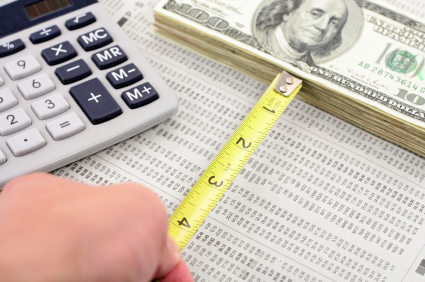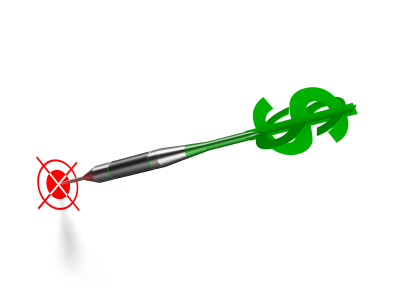Nila Getter, President, Association for Healthcare Value Analysis Professionals
The following is an edited excerpt of an interview conducted by Robert W. Yokl, Managing Editor, Healthcare Value Analysis Magazine, with Nila Getter, President, Association for Healthcare Value Analysis Professionals in December 2012
Nila Getter was hands-on in direct patient care as a nurse manager in critical care and an emergency room manager before she made the jump to value analysis in 2001. Nila has been with Kettering Medical Center, Kettering, Ohio, for over 32 years and says it “Seems like just yesterday that she started out”. Nila graduated from Miami University (Ohio) with a degree in nursing.
(RWY) How did you get into value analysis and the Supply Chain Management world?
(NG) I moved into the materials management department of Kettering as a nursing product manager. It was a new position with no job description, which gave me the opportunity to develop my own vision of how to best meet Kettering’s supply chain requirements. My vision was to use my own experience as a clinical nurse manager to be the person that I would have liked to have had serving my department’s needs when I was a nurse manager.
Initially, I started my position with no knowledge of value analysis but saw it as my role to be a liaison and interpreter for my customers, since I spoke the language of clinicians as well the jargon of purchasing, materials distribution and supply chain management. Today, the Kettering value analysis department has three value analysis managers, two of which are clinicians and one has an analytical background. The best part about our VA Program is that we are a team with one important voice for our health system.
(RWY) What was your view of the healthcare supply chain prior to working in the value analysis field?
(NG) As a nurse manager, I had no concept of what supply chain was all about. To me, it meant you ordered something from purchasing and it came to you or you called distribution and they brought the products to you. I had no concept of what was really going on behind the scenes; it was a different world I found myself in. As you know, I got into materials management before we changed the department’s name to supply chain. I was enthralled by how they had a listing of every single item that we used in the hospital and how they knew where it was stocked and how many we had on hand. I was just amazed! My big surprise was the lack of standardization. People could just pretty much order anything that they wanted, which of course we don’t do now.
When I was a nurse manager, cost management was one of my big pushes. For instance, one of my cost projects was to investigate our lost charge report which entailed all the products that we didn’t charge the patient or payer that we actually used on the patient. I said that I needed to fix this and they told me, “Oh, you can’t”.
Well, that was the wrong thing to tell me because if someone tells me that I can’t do something then I’m going to figure a way to do it. So, I spoke with my director about attacking this problem and she recommended that the most important thing to get people’s attention to what is important to you is to talk about it all the time and keep it in front of them at all times. So, I talked about lost charges in staff meetings, posted our losses and reminded my staff every month of what our lost charges were costing our hospital until we eliminated them totally! This is the type of mindset I brought to the materials management department and is still my mindset today.
(RWY) Could you give us the history of AHVAP and how it is evolving?
(NG) The Association of Value Analysis Professionals is an organization of nurses and clinical professional whose expertise bridges the gap between clinical staff and the supply chain process. Using evidence-based data, professional experience, and an understanding of the cost/quality continuum, these professional value analysis facilitators guide their clinical staff in the product selection process and assist with the resolution of quality concerns. Many AHVAP members coordinate their hospital’s technology assessment committees which engage physicians in the approval of emerging medical technologies that impact the cost of healthcare.
AHVAP has come a long way from an informal network of nurses to sharing information and experience regarding the best demonstrated products and practices that assure safe, effective patient care.
(RWY) When you got into value analysis, did you imagine that you would become the president of the association?
(NG) Oh, I absolutely didn’t think I would become president of AHVAP. All of the people in AHVAP were so knowledgeable and I was not at that level of value analysis at that time. So, I just tried to soak up everything I could from the knowledgeable people in AHVAP. I was so surprised when I received the invitation to run for President-Elect. Although I had joined AHVAP as soon as they were taking applications, and was their newsletter editor and board secretary for two years, I was truly shocked that they would consider me to be the President of AHVAP.
(RWY) You recently had your 9th annual AHVAP conference, could you share some of the highlights?
(NG) I think one of the primary emphases that we had at the meeting was to serve our members and show how being part of AHVAP is valuable to people. With education, we are going to be providing Webinars and continue to have the Quarterly Regional Calls which are great opportunities for Networking and Knowledge Exchanges.
Our Keynote speaker, David Ewald, gave a presentation which highlighted examples of great associations around the world and what they were able to accomplish. His main point was that the world works around great associations, and it just brings home the point of how important it is that we have this association with AHVAP.
Your presentation, Bob, was very good for me as well (Utilization Management) which made me think about conversions and implementations in a totally different way. I started seeing another side of it and I actually utilized it in a recent Labor and Delivery project that netted big savings.
(RWY) Like any major discipline, there are emerging subset best practices and systems such as Evidenced Based Value Analysis and Utilization Management. Could you tell us how you think these new VA best practices will impact the Healthcare Supply Chain?
(NG) I think we need to incorporate these into everything we do. Decisions should not be made on emotion or because a physician wants the newest gadget. We have to have evidence that standardization, process or a product improves patient care, reduces infection rates or reduces length of stay. Sometimes I have to bring my value analysis teams back to this: What does the evidence say about this process or using this product? My teams know I am going to ask these questions.
I am not as familiar with mainstream utilization management but can share with you what important utilization methods we use at our facilities. Kettering, in the past year, has acquired two hospitals and built a new hospital in addition to our already large multi-hospital system. Standardization of products is very important to us and every opportunity that we have we try to bring products to a standard. The goal behind this is to reduce costs by reducing SKU’s, but it also helps the clinician cross over from one department or facility to another inside our health system. If they have the same products and same process, then it makes that transitional change of working at one facility or another that much easier and more clinically effective. This also eliminates the risk of clinicians not having completed the minimum core competency training with these products or processes. Standardization allows for better clinical processes.
(RWY) Is Value Analysis emerging to the next big process in healthcare along the lines of major change processes such as Lean and Six Sigma?
(NG) I don’t know that it is right now but it definitely could be the next big change process. I think it is necessary for improvement for standardizing policies, procedures and processes, with an emphasis on standardization of product selection where it relates to direct patient care. I think Value Analysis and Lean go hand-in-hand, Lean being more process oriented, and value analysis gets down into the nitty gritty of products, services and technologies.
Learn more about the Association of Healthcare Value Analysis Professionals and all of their educational and network offerings at www.AHVAP.org





